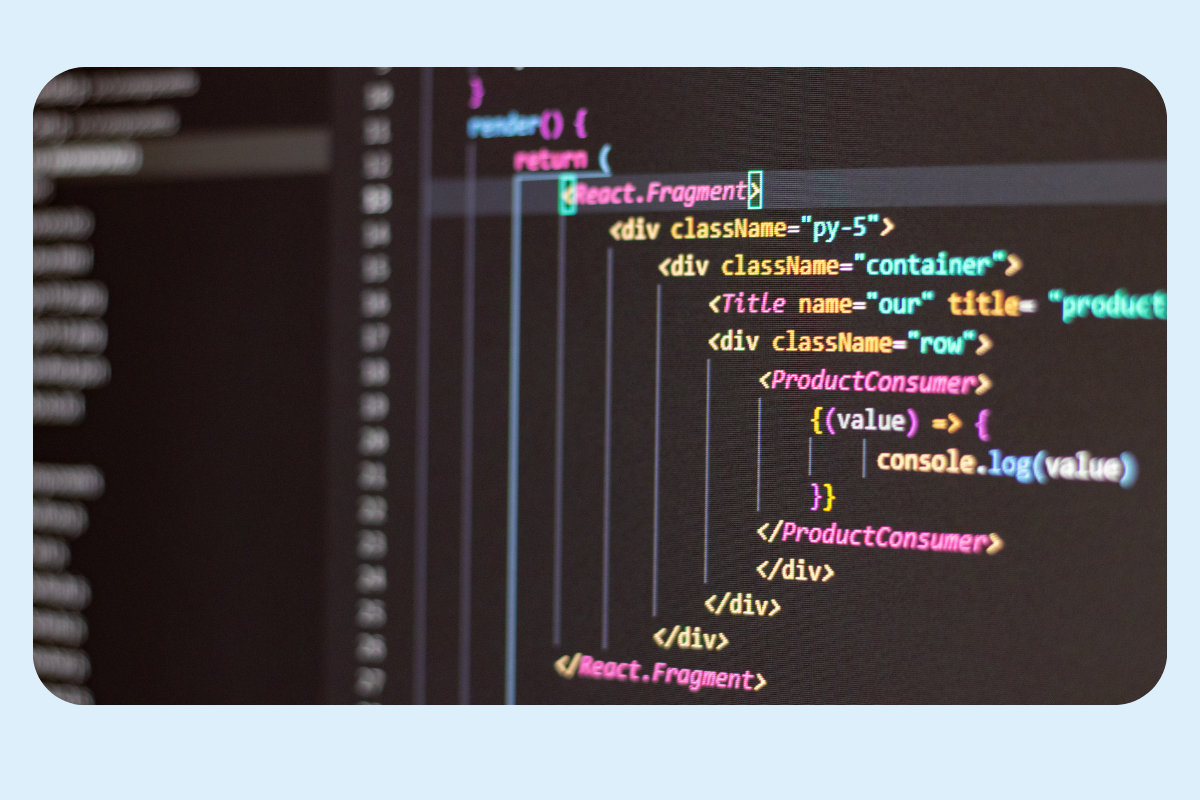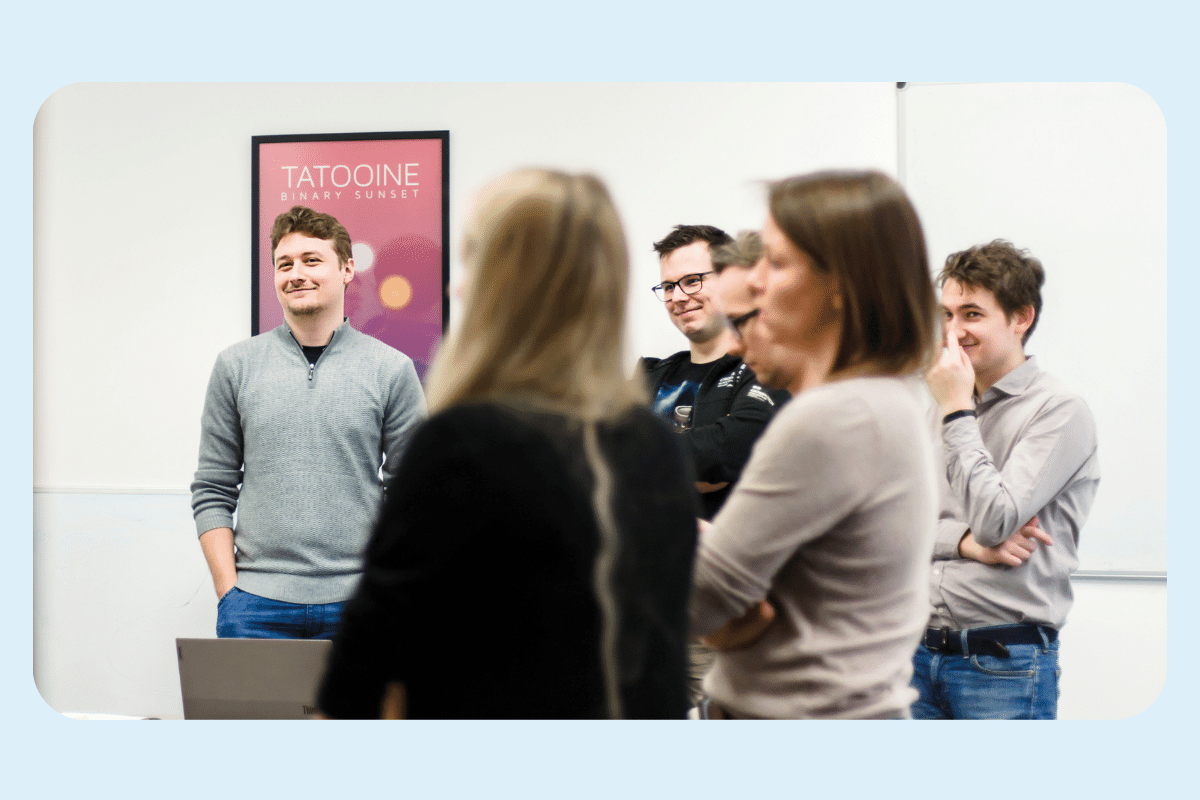
What is a Tech Stack and How to Choose One?
The possibilities for configuring a frontend or backend project are endless these days. We basically use a new combination for each project, adding or subtracting tools and frameworks depending on the project objectives. Also, during the project, we can change the toolkit if we find the ratio of technological cost to benefit as satisfying. In this context, it is helpful to know what a tech stack is, how to choose it and why it is essential in projects.
What is a tech stack?
A technology stack can be defined as a set of technologies used when working on a software project or application. The tech stack consists of various types of programming languages, frameworks and libraries, databases, front-end, and back-end tools, or applications connected through APIs.
The right selection of the various elements of the tech stack is important because it provides the team with the tools needed to create and maintain the product and supports customer acquisition.
Technology stacks are created to increase efficiency, productivity, and security in developing new custom software, mobile apps, website, or application. With the right set of tools and technologies, software houses can release a product much faster, with fewer revisions, and with a better estimate of how much time and budget a project can consume.
What does a tech stack look like?
The number of programming languages and other technology tools available on the market that is useful in a developer’s work is enormous. So why can’t you use any of them and start creating new software, web apps, or mobile apps?
The answer to this question is relatively simple.
When deciding on a particular technology stack, developers must consider first the goals, requirements, and needs of their project as presented in the requirements from the client and then match this with the optimal set of tools.
[Read also: How to Find Software Developers? 10 Experts Tips]
So, how should a tech stack be built?
The technology stack should consist of the following:
Operating systems and programming languages
The choice of these types of components in your technology stack is individual and should be based on the environment you are programming in, the personnel resources you have, and the kind of software or applications you specialize in.
You can successfully choose several operating systems or programming languages for your tech stack to end up with, depending on how you plan to build the backend, what devices you are developing the product for, and what final user experience you want to achieve.
The operating systems and programming languages often chosen for technology stacks are iOS, Android, Linux, Swift, Python, Java, Ruby, and Javascript.
Servers, cloud services and workloads
This category of tech stack components allows applications or web services to send and receive requests and ensures smooth operation and scaling according to current needs.
This category of tech stack includes Google Cloud, Azure, Apache, AWS, Nginx, and Cloudflare, among others.

Query execution and data storage
This layer of the tech stack includes relational and non-relational databases, as well as data warehouses.
They are vital because they allow you to execute and store queries on various data types in real-time. Thanks to them, it is known whether an application or service works correctly and how users behave while using it. Furthermore, analyzing this data allows you to constantly monitor the functionality and make improvements ideally suited to the needs of end users.
Among the popular components of this tech stack layer are MySQL, Azure SQL Synapse, Redshift, PostgresSQL, Splunk, and Talend.
Frontend tech stack
Front-end is the user-side interface that enables interaction with the app or website while ensuring a positive audience experience. Front-end technologies include JavaScript, CSS, HTML, user interface libraries, and frameworks like VueJS, React or Angular.
Backend tech stack
A backend is what you don’t see when you access the website or launch the app on a smartphone. The backend is the entire technical background, ensuring that all functions responding to end-user requests work correctly. The backend tech stack includes programming languages, servers, operating systems, web frameworks, and databases.
API services
Also crucial in technology stacks are appfdslications that support the process of connecting to the tools that build the extended technology stack. For example, some of the API services used are ready-to-use APIs or API gateways that support traffic management when there is a need to send and receive large amounts of information from different systems. Among those frequently used are Zapier, Segment, Google Apigee, and Tealium.
Monitoring and performance tools
Another layer of the tech stack comprises performance monitoring and analysis tools, which collect critical data on the technical performance of the software. With their help, it is possible to track the health of databases, servers, and other internal systems. Standard tools used in this layer of the tech stack include Datadog, New Relic, AppDynamics, or Dynatrace.

Business Intelligence Tools
BI allows gathering data aggregated from multiple company departments and the market. This way, you can better track your company’s market position and make better data-driven business decisions. Many BI tools, such as Microsoft Power BI, Tableau, and Looker, offer innovative ways to report and visualize data.
Analytics
There is also a not insignificant tech stack layer consisting of analytics tools that enable behaviorally, product, or predictive analytics. Popular ones include Google Analytics, Mixpanel, and Countly, among others.
How to choose a tech stack?
Correctly selecting the technology stack ensures effective, efficient, and profitable project work. This is because the right tools allow development teams to eliminate problems effectively and make more accurate budget estimations.
However, before you make a final decision on the set of tools and programming languages for your right tech stack, think about:
- the functionalities you want the application or service to have,
- the usability issue in terms of user UX,
- the personnel resources and competencies of the specialists you should engage for the project.
“There will be nothing revealing in the words that the tech stack for a new project should be selected according to the requirements of the system being built. However, the chosen technology should not be unnecessarily complex so that it does not limit the speed of development and does not hinder maintenance, nor should it limit the development of the product in the future, both technically and in terms of the ease of expansion of the team”. – suggests Arkadiusz Drysch, CTO of Stratoflow.
So what should you consider when choosing a technology stack for your project?
- Type of project,
- Stage of the project,
- Specific requirements for the system being built,
- Target scale of operations,
- Available technical competencies and their expandability.

What does the Stratoflow technology stack look like?
At Stratoflow, we specialize in Java software development. We focus on high-performance applications and services. We also know how to build low-latency Java applications and how to improve Java performance. This is supported by the following set of tools we have in our tech stack:
- Web applications: Mobile-friendly, responsive interfaces (Angular, VueJS, Bootstrap)
- High-performance systems: Scalable in-memory processing systems (Hazelcast, Grid Gain, Oracle Coherence, ultrafast JVM solutions)
- Development: Modern, lightweight Java development with Spring Boot, Grail, and Kotlin.
- Databases: PostgreSQL, Oracle Database, MySQL, ElasticSearch, Redis, Kafka.
- Integrations: MuleSoft, Apache Camel / Red Hat Fuse.
- Testing: Complete functional and non-functional testing coverage automated within the CI build process (Cucumber, JUnit, Selenium, JMeter).
- Deployment: Amazon AWS, Google Cloud, Microsoft Azure, dedicated hosting solutions.
Why is your tech stack important to your project?
Better communication and clear goals
When working on digital products, what counts is understanding customer needs, good communication – including within the team, and clear goals and guidelines regarding what each team member is supposed to do.
Unfortunately, misunderstandings can arise when we leave many gates open because of a lack of standardized procedures on the tools used.
By using the right technology stack – programming language, operating system, server, database, or testing tools, all full stack developers on the team will be familiar with the same set of tools. Of course, you can choose one of the popular and modern tech stacks or create one from scratch. This increases the efficiency of your work and helps you achieve your goals once adopted.
[Read also: Documenting Software in Development Projects: Types, Best Practices, and Tools]

Lower design costs
Nothing is worse than making significant changes to a project while it is in progress. Now imagine that in the middle of the work, part of the team finds that the chosen programming language is wrong and everything needs to be changed. Again, the loss of time, money, and reputation in the eyes of the client is assured.
Using the right tech stack, you minimize such situations to practically zero because you already have a predefined set of tools that work well together.
Flexibility
With tech stacks, you also can make changes to your project as you go along quickly – we’re not talking about a revolution but a better selection of tools among those that work well together. Moreover, you can use different stacks for different application parts, ensuring a faster development process.
Efficiency
Tech stacks that are maximally tailored to your needs help maximize efficiency by allowing you to use existing code, libraries, frameworks, or platforms. This speeds up the next steps in creating a new digital product and makes the code you write easy to maintain and scalable.
Scalability
Well-designed tech stacks provide almost unlimited scalability options – in terms of adding new users and increasing traffic or server space depending on current needs.
Speed and performance
Developing software using high-performance programming languages, such as Java, ensures fast and efficient performance for end users. This ultimately translates into business benefits for the company in the form of higher profits and building a competitive advantage.
[Read also: Legacy Software Systems: How to Live with Aging Software Architecture?]
Tech stacks examples
Among the ready-made, most popular tech stacks are:
LAMP tech stack
LAMP is a frequently used tech solutions stack used when building websites. LAMP consists of the following:
Linux: a server operating system. (You can replace Windows with Linux to create a WAMP),
Apache: software for web servers,
MySQL: a database system,
PHP: programming language.
MEAN tech stack
It is an open-source technology stack that is based on the use of JavaScript.
MongoDB: a NoSQL database program,
Express.js: a modular web application framework for Node.js,
AngularJS: a web application framework,
Node.js: an internal JavaScript runtime environment.
ASP.NET tech stack
Another technology stack, ASP. NET is dedicated to application development. It consists of the following:
ASP.NET MVC – which is a model-view-controller framework,
IIS – which is Microsoft’s web server,
Angular – a front-end framework with TypeScript,
SQL Server – Microsoft’s database,
Microsoft Azure – a common choice among .NET developers.
MERN tech stack
Tech stack MERN is similar to MEAN. The difference is the replacement of Angular.js with React.
React is widely known to be flexible and efficient when developing interactive user interfaces. The main benefit of using tech stack MERN is simultaneously using code on browsers and servers, access to an extensive library, and full-stack software development (frontend and backend) programming.

Right tech stack – improve the development process
Many different tech stacks are available on the market, but no two technology stacks are the same. Of course, you can make a tech stack yourself. It all depends on the software developer‘s skill set and experience, as well as the type of projects your company most often works on.
Many times, good developers, knowing what tools a company uses, can understand what operation mechanism an application or service has “from the inside” and what is needed.
Knowing the tech stacks is also essential when looking for a software company. This is because specific tools perform better or worse when developing applications or services. Therefore, the better matched the tech stack a software company has to the products it offers, the more likely it is to complete the project successfully and avoid the most common problem in software development process.
Deciding on a project’s technology stack takes work. What can help you the most is, first of all, to know the broad business context and to be able to undertake the analysis separately from subjective beliefs.
[Read also: The Future of Software Engineering: Key Emerging Trends in 2023]
Tech stack and development technologies – statistics and forecasts
Here are some statistics about the popularity of tech stacks, programming languages, and frameworks used in custom software development projects:
- Web Development Tech Stack: According to research the most popular technology skill in the web development tech stack in 2022 is still HTML. CSS ranked second, being preferred by almost a third of respondents.
- Programming Languages: JavaScript is the most popular programming language in 2022 and used by roughly 65 percent of software developers, with Python and Java being close behind it.
- Web Frameworks: Node.js overtook React.js to become the most used web framework among software developers worldwide, as of 2023. According to the survey, around 42.7 percent of respondents reported to be using Node.js, while 40.6 percent were using React.js3.
As for the trends for the future in custom software development:
- AI-Driven Solutions: AI-driven solutions are expected to be a major trend in custom software development in 2023.
- Low-Code Platforms: Low-code platforms are expected to gain popularity, allowing for faster and more efficient software development.
- Security Focus: There will be an increased focus on security in software development.
- Cross-Platform Development: Cross-platform development is expected to become more prevalent, allowing developers to write code once and deploy it across multiple platforms.
Summary
Remember that what technology stacks you use or the software house you want to outsource really matters. Choosing a tech stack that fits your project needs will streamline custom development work and make your ongoing project successful, on time, and within budget. Thus, you will quickly gain the benefits of digital transformation by acquiring new channels of contact with customers. Conversely, an inappropriate tech stack can cause significant delays in releasing the product to the market and, in extreme situations, even weigh on the failure of the entire project.
Related Posts
- Online Shopping Recommendations – How to Introduce Them in Your Business?
- Amazon Product Recommendation System: How Does Amazon’s Algorithm Work?
- Movie Recommendation System: How It Works And How To Introduce It In Your Business
- Your Guide to Property Management Software Development
- SDLC Guide: Best Strategies and Practices for Successful Software Deployment Phase
We are Stratoflow, a custom software development company. We firmly believe that software craftsmanship, collaboration and effective communication is key in delivering complex software projects. This allows us to build advanced high-performance Java applications capable of processing vast amounts of data in a short time. We also provide our clients with an option to outsource and hire Java developers to extend their teams with experienced professionals. As a result, the solutions designed for our customers contribute to their business development. We specialize in travel software, ecommerce software, and fintech software development. In addition, we are taking low-code to a new level with our Open-Source Low-Code Platform.
